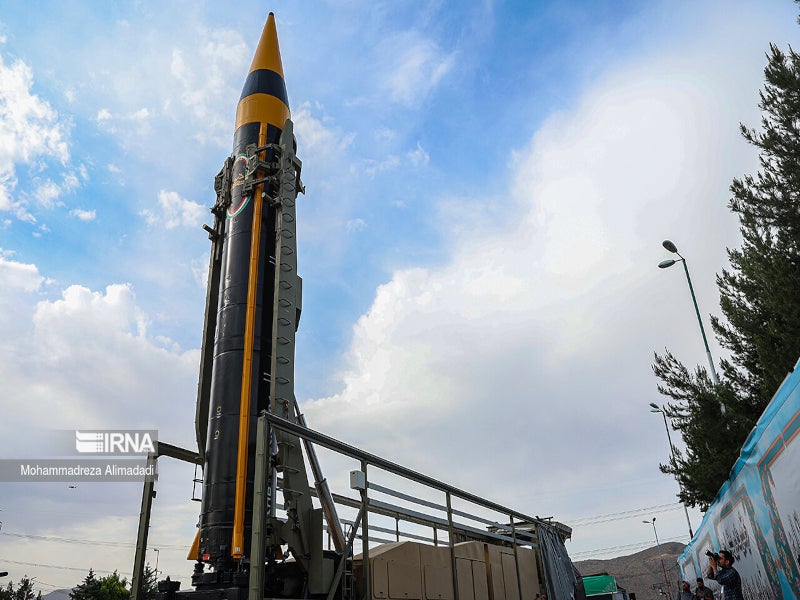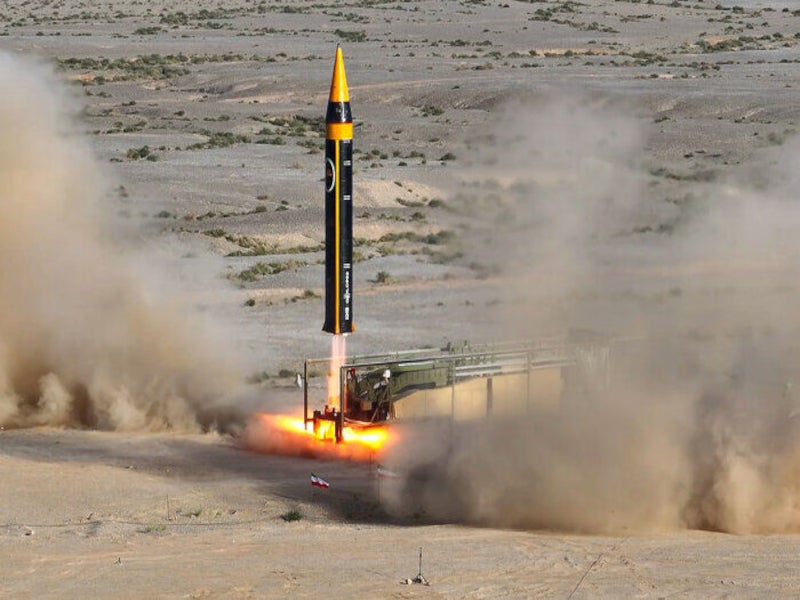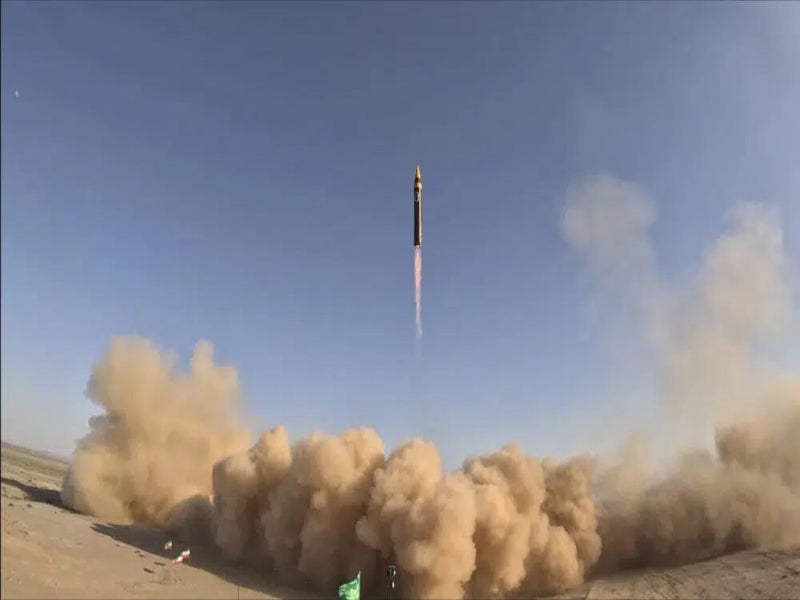Khorramshahr is a series of medium-range ballistic missiles developed by Iranian state-owned defence company Aerospace Industries Organization (AIO), for deployment with the Islamic Revolutionary Guard Corps (IRGC), a multi-service military unit of the Iranian Armed Forces.
The Iranian Defence Ministry had tested the missile in January 2017, but it exploded mid-air after flying for 600 miles (950km). The missile was finally unveiled during a ceremony held in Tehran commemorating the 37th anniversary of the Iran-Iraq War in September 2017.
A variant of Khorramshahr with a smaller and lighter re-entry vehicle than the previous version was paraded in Tehran in September 2019. The modification was anticipated to increase the missile’s flight range from 2,000km (1,242 miles) to 3,000km. Another variant of the missile, Khorramshahr-2, claimed to be capable of hitting a 40m×40m target, was test launched in August 2020.
The upgraded fourth generation of the missile, Khorramshahr-4, also called the Kheibar missile, was unveiled during a ceremony commemorating the 41st anniversary of the liberation of the southwestern city of Khorramshahr in May 2023. The medium-range precision-guided missile Kheibar was also test launched during the event.
Khorramshahr missile design details
Khorramshahr is a 13m-long, liquid-fuelled missile with a diameter of 1.5m and a launch weight of about 20t. The missile comprises a payload compartment containing warhead, along with upper and lower oxidiser tanks, an intertank section, and a fuel tank.
The missile does not feature any grid fins, with its guidance equipment accommodated in different compartments above the tanks.
The Khorramshahr missile is believed to be an Iranian version of North Korea’s Hwasong-10 intermediate-range ballistic missile (IRBM), which in turn is a modified version of the outdated Soviet R-27 (SS-N-6) submarine-launched ballistic missile (SLBM), according to a report by the United States Institute of Peace (USIP).
Hwasong-10, also referred to as the Musudan ballistic missile, was delivered to Iran in the mid-2000s, according to the Foundation for Defense of Democracies (FDD), a research institute based in the US.
Kheibar missile features
Khorramshahr-4 or the Kheibar ballistic missile is claimed to have enhanced strategic and tactical capabilities. It is capable of destroying targets within a 30m margin of error even at a distance of 2,000km. Furthermore, its launch preparation time is less than 15 minutes.
It features a short interval of approximately 12 minutes between launch and impact, which is achieved through the utilisation of hypergolic self-igniting fuel and the elimination of fuel injection and horizontal alignment requirements following the verticalisation phase.
The guidance and control system enables the missile to manoeuvre and modify its path beyond the Earth’s atmosphere, while also disabling its guidance mechanism upon re-entry into the atmosphere, rendering it invulnerable to electronic warfare countermeasures.
The control system also eliminates the need for the conventional slender-wing configuration in the Kheibar missile’s warhead, enabling it to accommodate a greater payload of explosive material.
The Kheibar missile is claimed to possess a ground impact force of 280 seconds and a vacuum impact force of 300 seconds.
Warhead details
Khorramshahr missiles can be equipped with unitary or multiple warheads. They can carry multiple independently targetable re-entry vehicle (MIRV) warhead of up to 1,800kg.
The Kheibar missile can carry a 1,500kg warhead with a range of 2,000km. It is capable of striking 80 targets upon reaching the target area. The warhead detaches at the last stage of flight and hits its targets with pinpoint accuracy at a high speed, hindering enemy air defence systems from detecting, tracking, or effectively engaging the missile to intercept it.
Engine and performance
The missile is propelled by the 4D10 liquid propellant engine, which remains submerged in the fuel tank. The engine allows the missile to travel at a speed of 16 Mach outside the atmosphere and eight Mach within the atmosphere.






